It doesn't matter who was the first to say "Not one step back!"
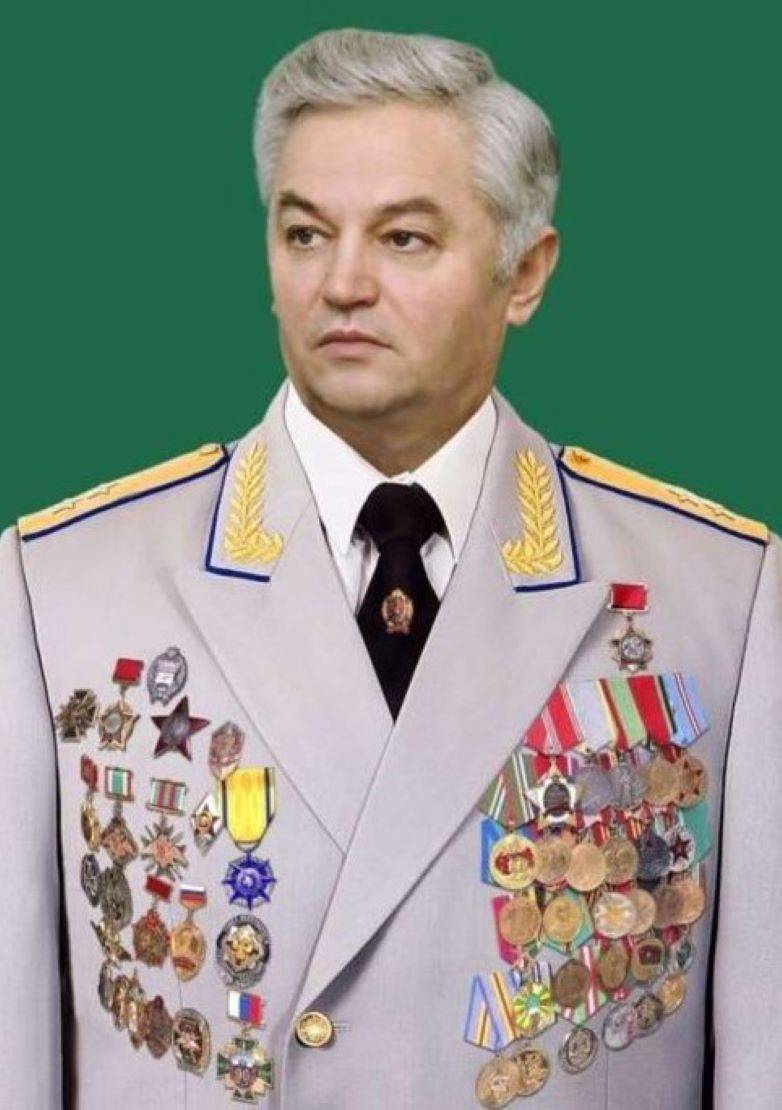
Voennoe Obozreniye, starting from September 12, publishes a book of memoirs by the head of the 117th Moscow border detachment, retired colonel Vasily Kirillovich Masyuk, which the author also called “Not a step back!”.
Today you will read the concluding part of General Chechulin's introduction to this book. Recall that Anatoly Terentyevich (pictured) - Honored Border Guard of Russia, Lieutenant General of the Reserve of the FSB of the Russian Federation, Commander of the Group of Border Troops of the Federal Border Guard Service of the Russian Federation in the Republic of Tajikistan (1992-1994).
Left flank alarm
Since the spring of 1993, the situation was especially acute and bleeding in the area of the 117th POGO, or rather, on its left flank. This was largely facilitated by the mountainous terrain (foothills of the Pamirs), the presence of sheltered settlements on the Afghan border, which the armed opposition turned into its forward bases and command posts.
It was the Sarigor Tajik border area that was chosen by the militants as a springboard for the future "Islamic Caliphate." From here, the victorious offensive of militant Islam on the neighboring Central Asian republics was to begin. The delusional idea was supported by incessant shelling, attempts at attacks, intrusions, and only endurance, skill, heroism of the border guards, confident leadership of the detachment control unit nullified the enemy's aggression.
During the Afghan events of 1979-1989, first combined combat units (SBO) were deployed in the adjacent border zone, then standard motor-maneuvering groups (MMG), which achieved the depth of defense and the ability to influence the enemy with fire and maneuver before his approach to the line borders.
In 1993-1995, the border line was a regulatory and physical barrier. But this gave the enemy serious advantages - the right to choose the directions and forms of military action across the border. The officers and fighters of the border of the 117th border detachment opposed this with a good knowledge of the area, the way of life and activities of the border population.
And also - scrupulous acquisition of intelligence information about the intentions of the enemy, timely maneuver of forces and means in threatened directions. Differentiation of different degrees of combat readiness was a constant norm in the combat life of border and garrison units, as well as the indispensable availability of reserves.
In early June 1993, the Judicial Collegium of the Supreme Soviet of the Republic of Tatarstan banned the activities of opposition parties in the republic, which caused extreme anger on the part of the armed wing of the opposition. On July 13, from dawn, at the 12th outpost of the Moscow border detachment, an unequal battle between border soldiers and militants began.
The tragic events at the 12th frontier post had a significant state and public resonance not only in Russia. On August 7, 1993, the heads of Kazakhstan, Kyrgyzstan, Russia, Tajikistan and Uzbekistan made a statement on measures to normalize the situation on the Tajik-Afghan border.
On December 24, 1993, they signed a Memorandum of Cooperation on the Protection of External Borders, where the participants recognized that the defense of external borders is a common cause and should be carried out jointly. The leadership of the group, the command of formations and units, and primarily of the 117th border detachment, learned two main lessons for themselves.
First, a well-organized, sufficiently armed, extremely aggressive adversary is acting against us, with long-term goals - ousting Russian border guards, armed seizure of a bridgehead in an inaccessible area, with the subsequent overthrow of the legitimate government in the Republic of Tatarstan. The radicals from Islam will continue to firmly declare themselves as a real destructive force.
Secondly, the existing system of border protection, the level of combat control, including reserves, interaction with the units of the 201st Motorized Rifle Division do not correspond to the new threats, and it is unacceptable to resist them at the cost of such losses.
We responded more often, but did not anticipate
The task of qualitatively changing the composition of the group's units and the methods of their service and combat activities arose sharply. The line of deployment of border units was to be turned into a defensive line. A task that clearly surpasses the group's own capabilities.
It must be admitted that the activities of the parts of the group at that time were not deprived of attention and help from the center, as well as the fact that many measures were belated. We often responded with dignity, but did not anticipate. It happened that the instructions from above were of a purely declarative nature ("ensure", "not allow"), due to the lack of concreteness, they were dissolved in the routine of combat events. Border protection was not yet the concern of many law enforcement agencies, both in Russia and in the countries of the region.
Structural changes in the border department that began in the summer of 1993, a new, more military, dynamic and subject-consistent style of leadership of the center came, as they say, "to the place and to the time." The situation has not become less tense, and it has not become easier for us to serve in Tajikistan, but we have gained greater independence. We clearly felt that we were the primary object of attention and real assistance from all combat and support structures of the central apparatus and the entire system of the Federal Border Guard Service of the Russian Federation.
It was clear that we were being given everything we needed not out of excess, but at the expense of overstraining other sections of the border. This understanding obliged and mobilized, forced to rethink actions, to check with the new course of the FPS. This could not but affect the operational and military activities of units, and in particular of the 117th border detachment ...
The transformations began with the most important thing - the formation of the necessary climate among the personnel. A step was taken from disbelief in the day of tomorrow to a simple, but so desired by all, certainty - "Russian border guards in Tajikistan for a long time, if not forever."
People realized that serving in Tajikistan is necessary and possible, and subsequently - attractive and prestigious. The vectors of state and personal interest coincided. This at once debunked the "suitcase sentiment". They began to value service in Tajikistan.
A little later, on the website of the US Ambassador to the Republic of Tatarstan, it was scathing:
It is clear that the American saw in this only mercantile interests (preferential length of service, increased salaries, etc.), but by no means patriotism and a sense of duty.
I will leave the word “turn” without comment, but, to the credit of those who served in the Republic of Tatarstan, I don’t remember a case of refusal, evasion from service in Tajikistan, which became a symbol of service compliance, military formation, and male self-affirmation.
The 117th border detachment became like a magnet, many tried to get to serve there, the officers at the outposts were chosen from the best. Despite the fighting situation, the detachment lived a full-blooded life: it had its own school and kindergarten.
All public institutions, as it is now customary to say, worked: the officers' meeting, the women's council, amateur performances, sports clubs, etc. were created. and aspiring pop, theater and film artists.
This is our border with you
At the interstate level, it was possible to implement the "hitherto unprecedented idea" hatched with the center: the citizens of Tajikistan came to serve, to defend their native land under the Russian border flag. An idea that was not initially devoid of risks.
Knowing about the long-standing enmity (to say the least) between people from the south and north of the Republic of Tatarstan, realizing that we are handing weapon into the hands of children, whose parents and relatives are de facto at war with each other, I was more careful in assessing the local conscription.
In a conversation with the Director of the Federal Border Service of the Russian Federation, Army General Andrei Ivanovich Nikolayev, I directly assumed the likelihood of a situation when, contrary to the will of the Russian commanders, the national collectives could get out of subordination. I remember very much his calm, measured answer:
Life has shown the absolute correctness of the chosen vector of development. There was no reason to doubt the feeling of elbow and shoulder of the Tajik colleagues.
In early May 1995, a significant group of militants surrounded the Vanch frontier post (section of the Khorog border detachment), which blocked the narrow mouth of the gorge of the same name. The bandits subjected the outpost to flamethrower fire, approached to throw a grenade. Night and mountain conditions did not allow the besieged to rely on quick aid from reserves and air support.
The leader of the bandits repeatedly, in the intervals between the raids, called on his fellow countrymen not to shed blood for the "infidels" (read - Russians), of whom there were only a few people at the outpost. But the personnel (natives of Kulob and Khujand) only rallied in the face of a common enemy, stood out until dawn and with the help that came up, threw the enemy back, inflicting significant losses on him.
I don't think these guys will ever have questions about who is from where. They became a single whole - the defenders of the state of Tajikistan.
By the way, service in the Russian border troops in conditions of mass unemployment was for many Tajik soldiers significant material support for their families and, in general, contributed to strengthening ties with the local population. I remember, flying up to the Moscow frontier detachment, I noticed that at the gate on the territory of the detachment, as well as along the fence, many men in national clothes had accumulated, and women's headscarves flashed.
My fears were dispelled by Lieutenant Colonel Vasily Masyuk, who met me: "This is a common sight on salary day for military personnel - relatives from all over Tajikistan come."
When the active phase of hostilities in the North Caucasus began, representatives of teips and clans often visited the same Moscow detachment in order to persuade border guards of Dagestan nationality to defect and fight against the federals. Not a single soldier and sergeant then succumbed to provocations and persuasions and did not leave the service, and this speaks volumes.
The evidence that the protection of the southern border has become a common task for the neighboring states of this region was the attraction of peacekeeping contingent from Kazakhstan, Kyrgyzstan and Uzbekistan, which qualitatively influenced the situation.
Units from these states closed gaps and gaps in hard-to-reach mountain areas, which made it possible to free up their own reserves and redirect them to other threatened areas, including in the 117th POGO.
The saturation of the Group with human resources raised the bar for the level of combat professionalism of newly arrived units. Any connivance, negligence painfully responded with unjustified losses.
The increase in the timeframes for sending border guards officers to Tajikistan (up to one and a half years) and reinforcement units from other FPS associations not only reduced the number of temporary workers (old servicemen used to make fun of those who came for a month, calling them "humanitarian aid"), but also allowed the newcomers to grow into the situation, acquire the necessary combat skills. You could rely on them, do without petty tutelage.
They did not remain unarmed
A significant leap has also taken place in the area of the group's armament and its saturation with military equipment. Has been significantly strengthened aviation grouping. In addition to the base Dushanbe air regiment, air squadrons were additionally deployed in the Khorog and Moscow border detachments, which made it possible to have more than 50 combat and transport helicopters.
The presence of 300 artillery systems and more than 300 units of armored vehicles made it possible to create fire defense nodes, timely and reliably cover ground military operations with fire. Fire damage was inflicted on the enemy already on the distant approaches, finishing him off during retreats.
Systematic supplies of materiel, the arrival and training of relevant specialists on their own base allowed the group's border guards to engage in large-scale engineering and technical re-equipment of the border, which had a pronounced defensive nature.
Places of deployment of border outposts, outposts, temporary positions necessarily implied a serious degree of security, which added autonomy of actions, reduced losses of personnel from enemy fire. There was a practice of mining some of the most dangerous areas.
The creation of our own (tactical - from the border detachments, operational - from the group) reserves, the reinforcement of the FPS director by reserves made it possible to echelon the defense.
The subunits were deployed on tactically advantageous lines, and maneuver of forces and assets in threatened directions was envisaged. Each post, each outpost, MMG necessarily had a mobile reserve to provide elbow assistance to neighboring units. The positions occupied by units of the collective peacekeeping forces, Tajikistan's own border structure, were initially created in secondary directions, over time they entered the first echelon of defense.
The highly rugged nature of the terrain (the left flank of the Moscow and the entire section of the Khorogsky, Ishkashim border detachments) forced us to turn to the early experience (Caucasus, Afghanistan) of fighting in mountainous conditions. The creation of posts at the commanding heights made it possible to significantly secure the fortified points of the base outposts.
For example, the newly exposed 12th frontier post of the Moscow detachment was a buried fortified point with strong fire reinforcement (tank, BMP, ZSU-23-4), covered by border posts at commanding heights. Reserves and a rocket artillery fire group (two Grad installations) were based in the depths.
Attack helicopters were in the 20-minute flight time mode. The shelling from the side of the militants was harshly suppressed by return fire, and such a pursuit was carried out to the border line. Border posts "Turg", "Navranga" were set up at inaccessible heights, which deprived the militants of domination on the heights.
The timeliness and correctness of the measures taken were confirmed by the events of the summer and autumn of 1994 - a period of special tension for Russian border guards.
Election factor
The upcoming elections of the President of the Republic of Tatarstan and preparations for a referendum on the country's new Constitution, as well as the absolutely fruitless 2nd round (June 1994) of the Inter-Tajik talks, caused a sharp intensification of sabotage actions and provocations on the part of militants. The edge of enemy aspirations again rested on the defenders of the Sarigorsk direction (left flank of the 177th POGO).
On the night of August 19, a multiply superior group of militants, which included Afghan mujahideen and Arab mercenaries, fiercely attacked the Turg and Navranga border posts, fiercely firing rockets.
At the cost of blood and lives (7 people died, including the commander of the post, Lieutenant Vyacheslav Tokarev - in the photo), the border fighters fought off attack after attack, held dominant positions. Lieutenant Oleg Khmelev, who took command, caused fire on himself, which literally swept the enemy in meters from the position of the border guards.
In the same 1994, the situation on the Pamir direction of the Tajik-Afghan border significantly worsened. Large formations of the opposition were concentrated in Darvaz and Vanch districts. The Murghab region was considered by the enemy as a transshipment base for storing and transporting weapons and drugs deep into the territory.
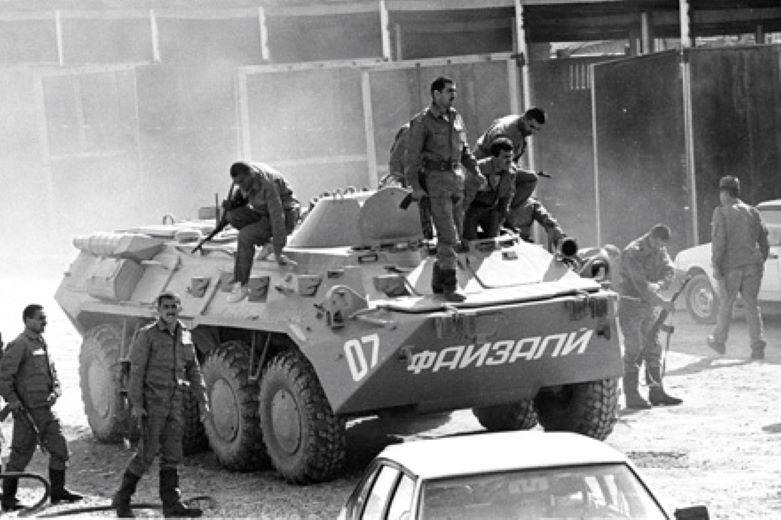
The September operation in the Shuroabad direction (section of the 117th POGO) made it possible to destroy more than 150 militants and seize 7 warehouses with weapons and ammunition.
Outposts, posts, border guards, pressed by the terrain to the Pyanj River, were repeatedly subjected to terrorist attacks, shelling, both across the border line and from bandit groups approaching from the rear areas. The exceptional vulnerability of the narrow and winding Kalai-Khumb-Khorog road, sandwiched by sheer cliffs on one side and the steep bank of the Pyanj River, on the other, made movement along it extremely dangerous.
Any turn concealed an ambush by militants, and even support with fire from the Afghan coast - the distance did not exceed a direct shot from small arms, RPGs and NURSs.
Disagreements between the leaders of the bandit groups were often used. Some of them were formed from the local population and were more puzzled by their ancestral basic villages. Others, more rabid, from the DIVT members, came to restore order to the Pamirs from Afghanistan and included Afghan mujahideen and Arab instructors.
The severity of the situation demanded changes in the grouping of troops by creating additional units on the Kalai-Khumb, Khorog and Ishkashim directions at the expense of the reserves of the director of the Federal Border Guard Service of Russia from other sections of the border.
Posts were additionally set up on threatened areas. The border guards of Tajikistan received areas of responsibility, as well as the peacekeeping forces, from Kazakhstan and Kyrgyzstan (it must be admitted that the combat potential of the latter left much to be desired).
The newly formed Kalaikhumb border detachment took over the protection of the state border - one can imagine what organizational, logistical efforts, what overstrain of personnel this organizational measure cost - after all, everything took place within the framework of a real combat situation.
The actions carried out, coupled with active reconnaissance, excluded the movement of bandit groups along the road along the border, forced them to hide in hard-to-reach gorges, along which preventive fire strikes were made and ground operations were carried out by the reserves of the heads of the border detachments and the group. Received the practice of misinforming the enemy, conducting demonstrative and distracting actions.
Other times, other customs?
The beginning of 1995 was marked by a number of advances in the inter-Tajik negotiations (in any case, so it seemed and wanted to believe in it). Persistent work with representatives of the UN, peacekeeping, diplomatic missions: regular briefings, joint flights and trips to investigate military situations, had its effect - a firm opinion was formed that it was the opposition that did not comply with the ceasefire agreement.
This allowed the UN Security Council at the end of January to make a decision to send an additional contingent of military observers. Under pressure from the international community, the Tajik opposition in early March announced the extension of the ceasefire for another 50 days (until April 26, 1995).
In contrast to the aforementioned measures and declarations, March-April was characterized by another aggravation of the situation on the border. The militants attempted to break through to Tajikistan in the areas of the Moscow and Khorog border detachments, which led to significant losses of the military contingent of Tajikistan and Kazakhstan.
It is fair to say that the combat training of the newly arriving contingents did not always correspond to the severity of the situation, and it was often necessary to gain experience in hostilities at the cost of blood, or even the lives of soldiers fighting on the border.
In the course of six border operations carried out during this period, 86 bandit groups with interregional ties were eliminated, and more than a hundred drug trafficking channels were identified. The enemy was forced to remove his posts and vacate the zones of service and combat operations of the RF GPV in the Republic of Tatarstan.
It is pertinent to give an example of the section of the 117th POGO, where the enemy practically abandoned full-scale actions and, failing to achieve his goals, began to shift to the Ishkashim and Khorog directions. By October 1995, the formations of the UTO, numbering 120-150 people, remained in the Yaviz and Yokhchi-Pune regions.
Russian border guards in Tajikistan had to wage an intense fight against drug smuggling from Afghanistan. The flow of the drug swelled before our eyes. And there were objective reasons for this.
For example, the population of the Pamirs, en masse covered by unemployment, more than poorly supplied from the central regions of the Republic of Tatarstan, literally as a means of survival adopted smuggling across the border.
At first, it was the usual barter nature of the exchange of products, consumer goods, which then turned into the transfer of drugs, and this has already become the lot of organized and armed groups. The detained drugs began to count in hundreds of kilograms, and then in tons!
I remember how 93 kg of opium "char" were detained at the site of the Murghab detachment. It was impossible to apply the existing Soviet experience in dealing with detained drug raw materials, and, in fact, new developments were still lacking. One thing was clear, if the detained drugs were transferred to the Tajik authorities in the localities - consider giving them to other owners and no more ...
Made a decision: under a video camera, in the presence of competent representatives, including from the Republic of Tatarstan, to burn the detained consignment of drugs. The director of the Federal Border Service of the Russian Federation approved the decision.
They did so, after which they informed the leadership of the republic. But this did not prevent the Minister of Internal Affairs of the Republic of Tatarstan from going to the Prosecutor General of the Russian Federation with a complaint - they say that Russian border guards are almost burning the property of the republic. A start was made - and the drug plots blazed up, in which tons of "dope" were burned. It is difficult to calculate how many people this saved their health, and even their lives.
On interaction with the 201st MSD. In the headquarters offices on the maps approved and endorsed by the military and border commanders, everything did not look so bad. The reality was much worse when a fierce battle broke out at the 12th border outpost (I can't help but say about the heroes of the 12th). A support squad from the 149th MRR of the 201st MRD, consisting of one tank, two infantry fighting vehicles, two armored personnel carriers, ZSU-23-4 instead of the planned 50 minutes spent more than five hours until it connected with the reserve of the Moscow border detachment.
Wrong milestone?
It also looks awkward that the commander of the 117th POGO previously substantively and really organized interaction in time and lines with the commander of the 149th MRR Loktionov, with whom he was very friendly, both in service and in life. But the command of the 201st Motorized Rifle Division was not eager to help the border guards.
Absurd?
But this was the case, and this situation became the subject of investigation during the subsequent visit of the Minister of Defense of the Russian Federation and the head of the PV of the Ministry of State Security of the Russian Federation.
The lessons learned are correct at all levels. Reinforcement units from the 149th MRP reached the border line. Fire groups (howitzer, rocket launchers "Grad") were concentrated on the most dangerous areas.
Regular training made it possible to count on timely assistance from the reserves of the 201st Motorized Rifle Division. In the battles for the Turg and Navranga border posts, ground attack aircraft from the collective peacekeeping forces were used. In a word, the border guards have found a real sense of the elbows of their army brothers.
The border commissar work was actively carried out with the border guards of Afghanistan, local authorities of the Afghan border area, and contacts were made to individual leaders of the opposition. In part, this had its effect.
For example, the flat sections of the border on the right flank of the Moscow section were distinguished by a greater stability of the situation, the possibility of a joint response to the actions of bandit groups. Word, conviction, example - this is also a weapon that Colonel Vasily Masyuk actively wielded.
The situation in April 1993 is well known, when he met the refugees leaving the village of Porvor. The first case of the head of the Moscow border detachment, not only shamed them, but also convinced them to return to their homes, create self-defense and prolong economic activity.
All this can be considered as the first steps of what later resulted in an innovation developed with the center - a reconnaissance and fire method of border guarding, which implied, jointly with Afghan border guards and security officials, preventing bandit groups from reaching the border line.
By agreement, it was envisaged to inflict fire damage (by aviation, rocket, cannon artillery) at the places of accumulation and shelter of militants on Afghan territory. The population of the Afghan border area was rejected in every possible way from aiding the militants. Subsequently (1995-1996), a safety zone with a depth of 15-20 km was created. Active reconnaissance and timely action made it possible to demilitarize this zone as much as possible.
Without a doubt, the main participants in the heroic drama that took place in the sector of the Moscow detachment were border guards, regardless of their positions and military ranks. Multinational collectives, often without deep professional training, in the face of mortal danger rallied into a single whole and showed massive examples of resilience, heroism, and self-sacrifice. As it should be, the right tone was set by officers, commanders of all levels.
The results of the service and combat activities of the State Security Service of the Russian Federation in the Republic of Tatarstan for 1993-1995 are reflected in combat reports: 857 violators of the state border were detained, 702 attempts to violate it were prevented, more than a thousand militants were eliminated, 64 caches were destroyed, more than 400 weapons were captured, 848 missiles, more than 85 thousand ammunition, 510 kg of explosives. 1 kg of narcotic drugs were detained and destroyed.
In the area of the 117th POGO during these years, 125 major military clashes took place, during which 107 border guards were killed and 288 were wounded. Many hundreds of militants were directly destroyed, only 436 people were taken prisoner with weapons in their hands.
Subsequently, it became obvious that the military-political struggle of the Tajik opposition had degenerated into a cynical drug business (the drug flow from Afghanistan increased tenfold). Service-combat and operational-KGB activities of the Moscow border detachment largely contributed to the debunking of the international image of the DIVT.
The main result I have every reason to believe is the fact that the units and subdivisions of the RF Border Group in the Republic of Tatarstan have adequately fulfilled the task of holding the Russian geopolitical outpost, ensured stability and thus played an important role in the settlement of the inter-Tajik conflict.
The price - great and sacrificial - requires the lowest memorial bow to the Fallen Warriors, as well as caring attention to the living participants in the heroic drama on the post-Soviet borderlands.

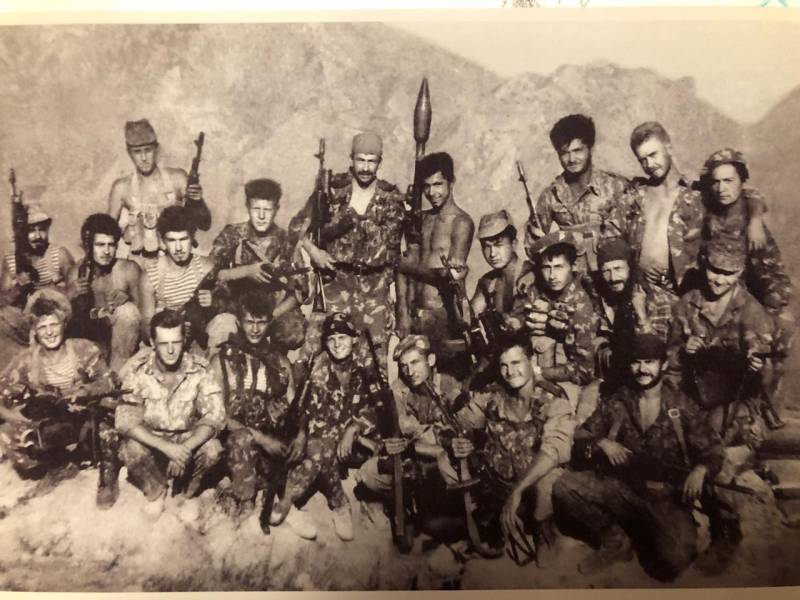
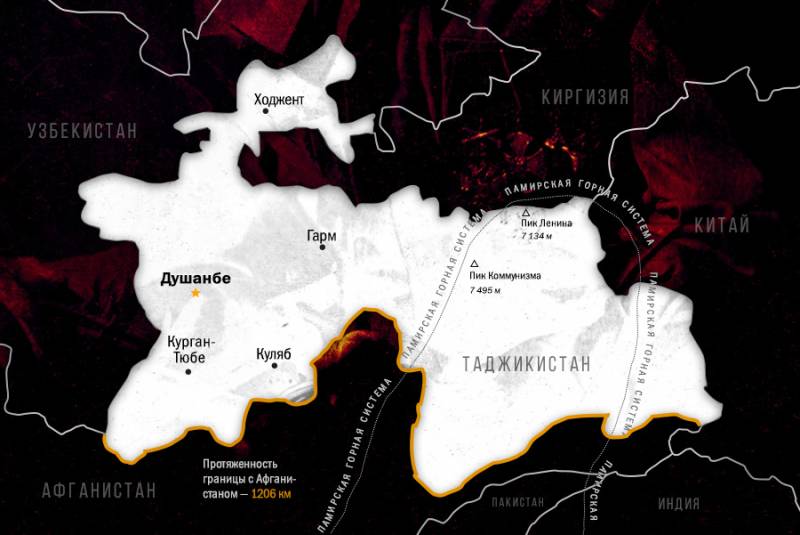
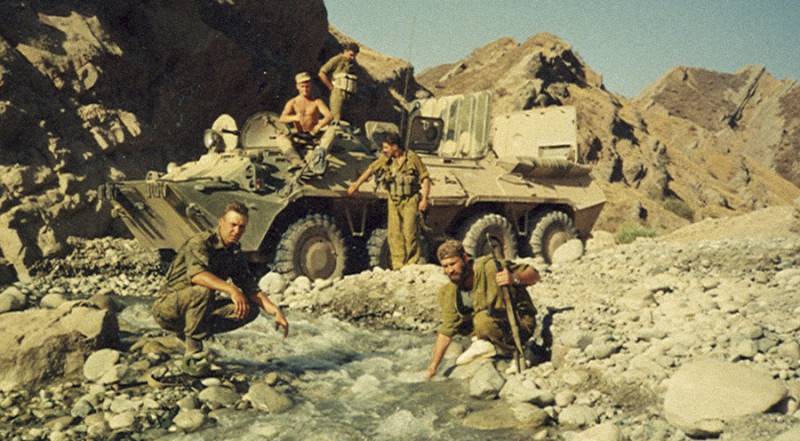
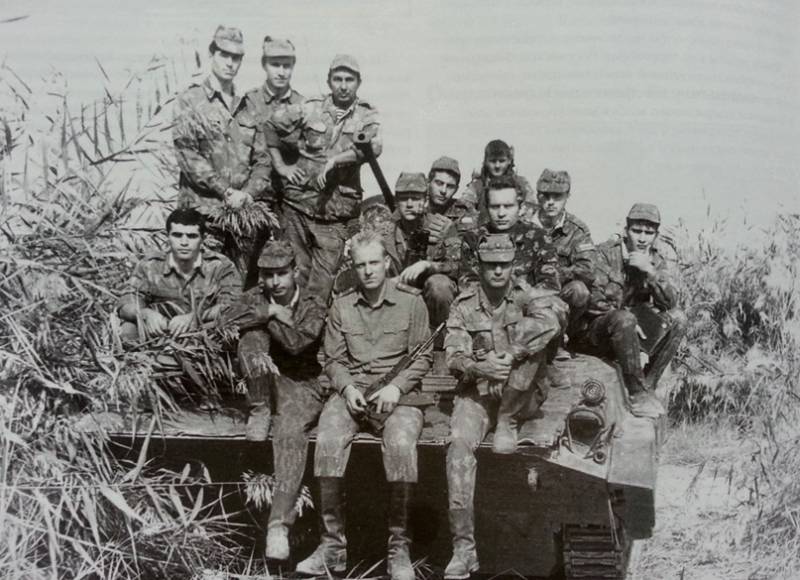
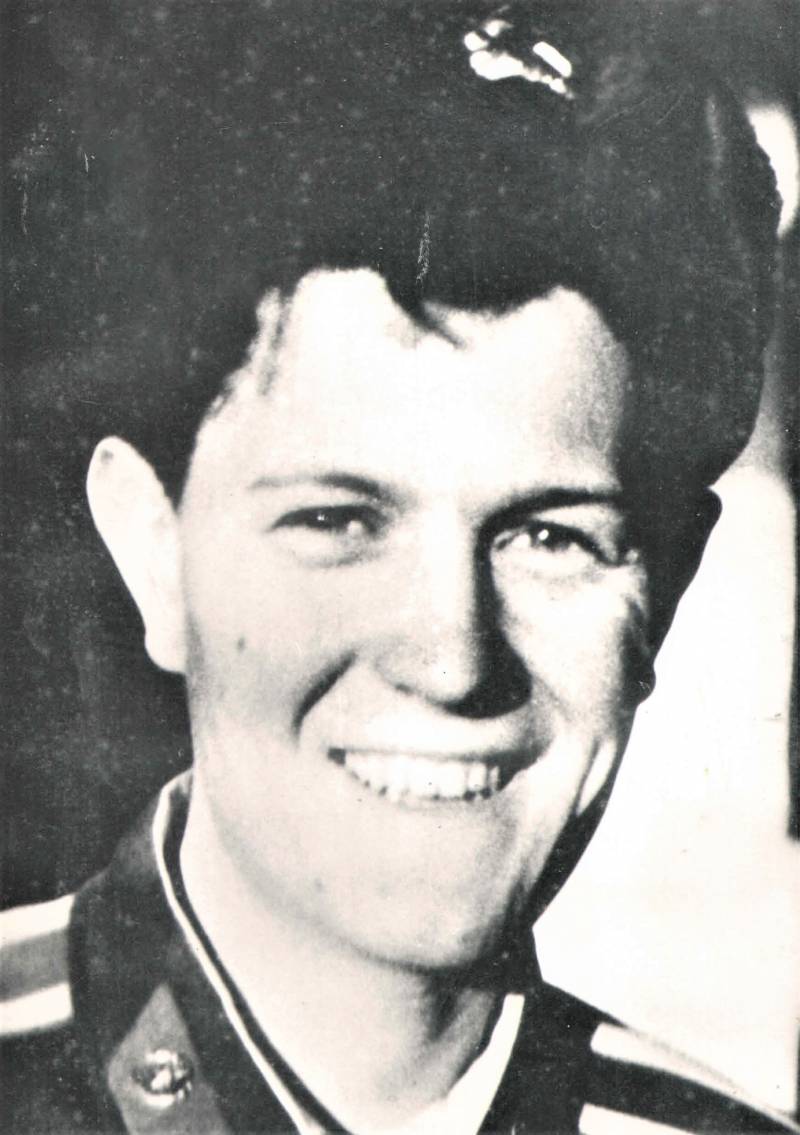
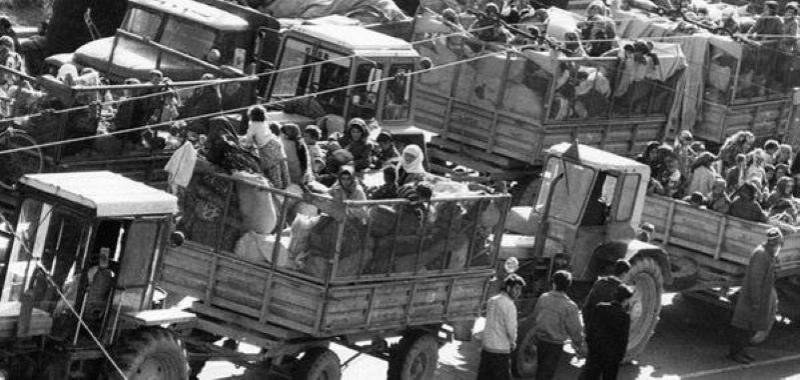
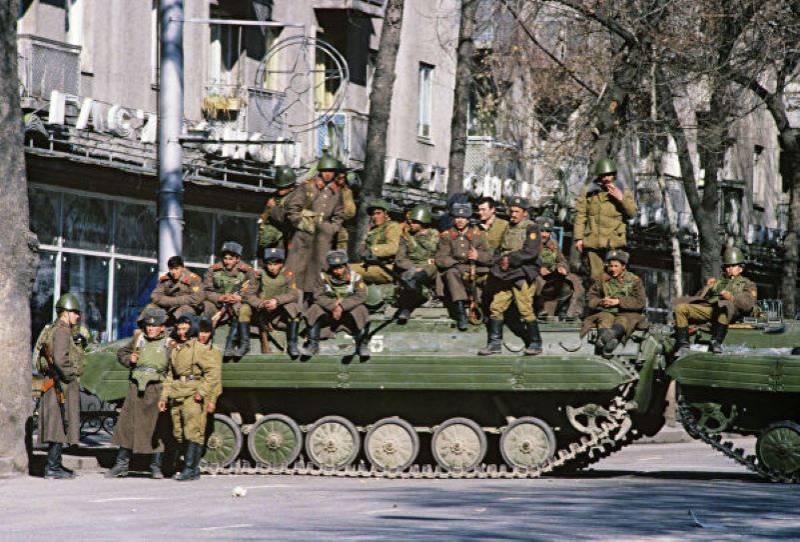
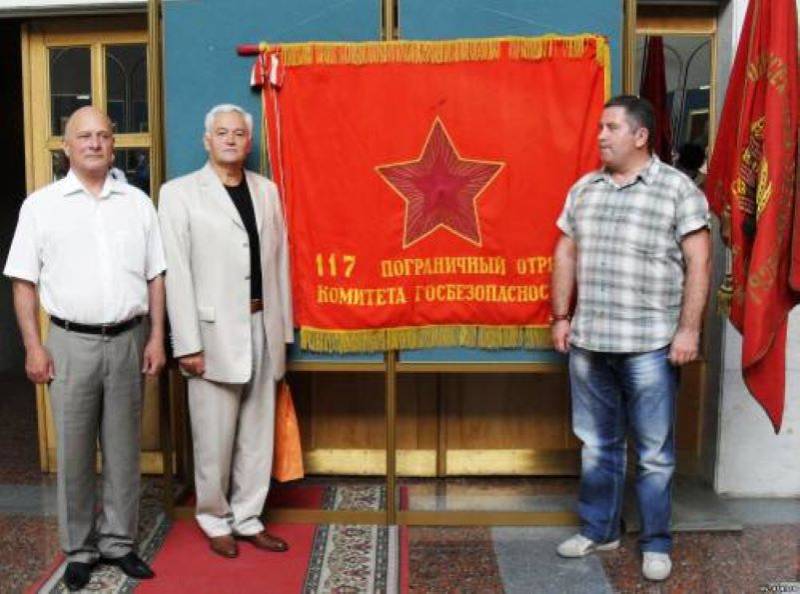
Information